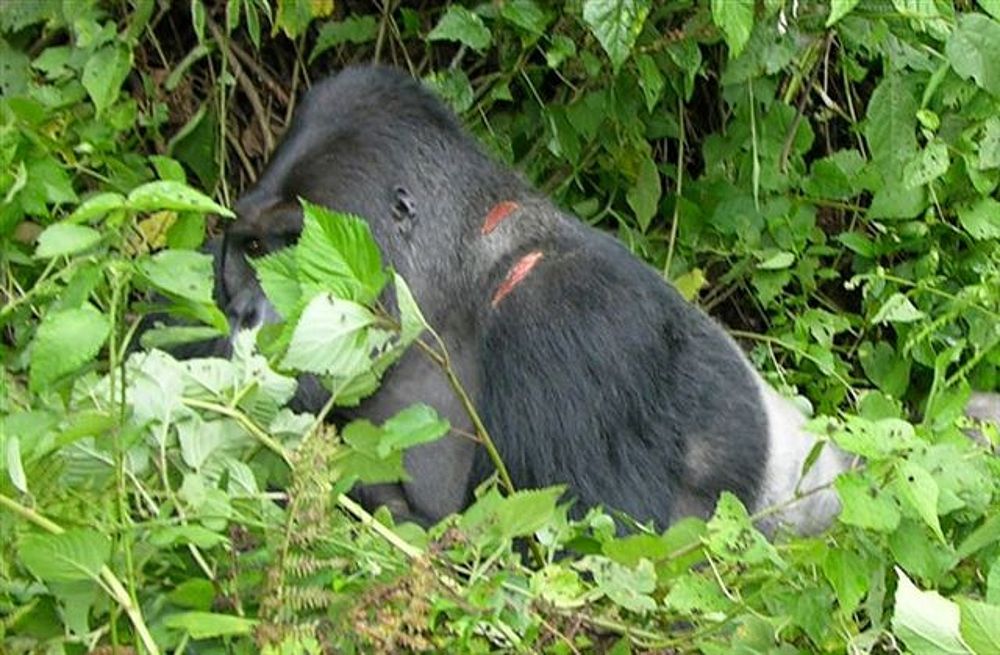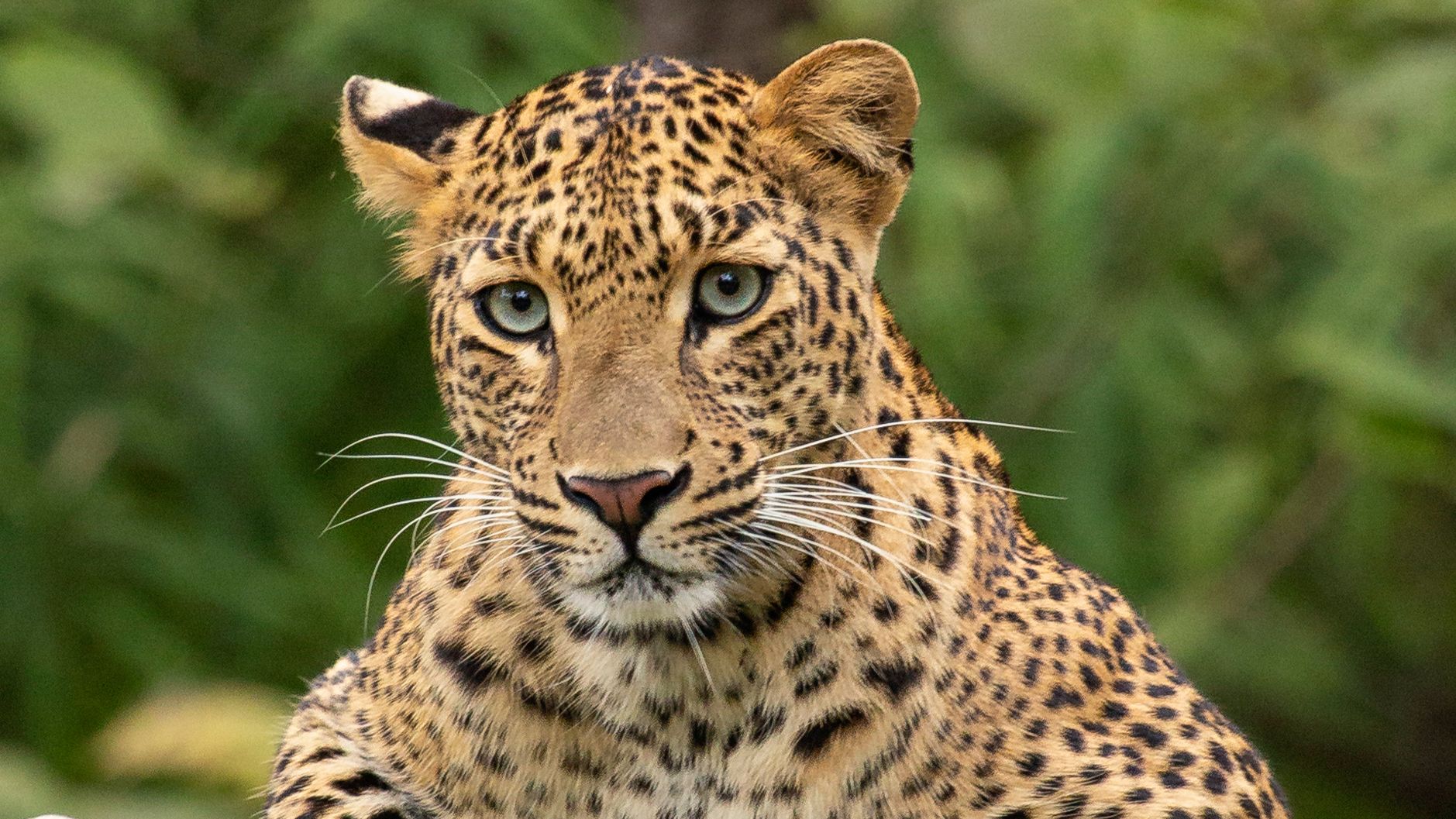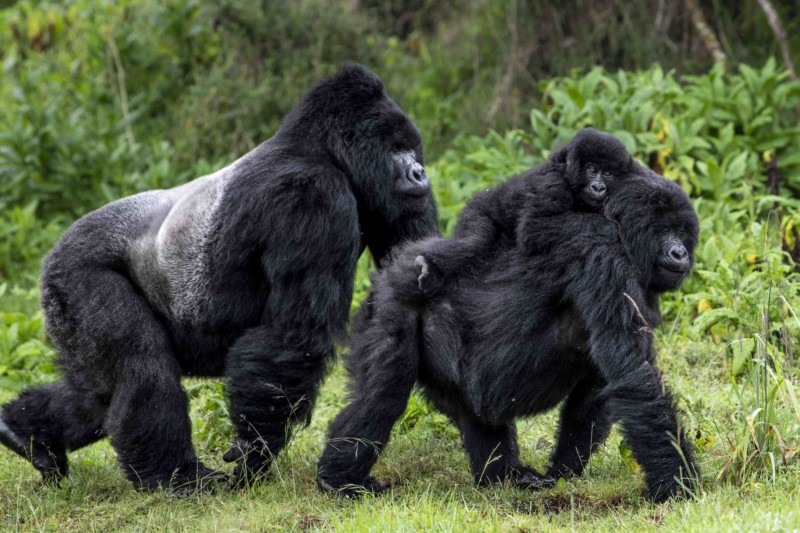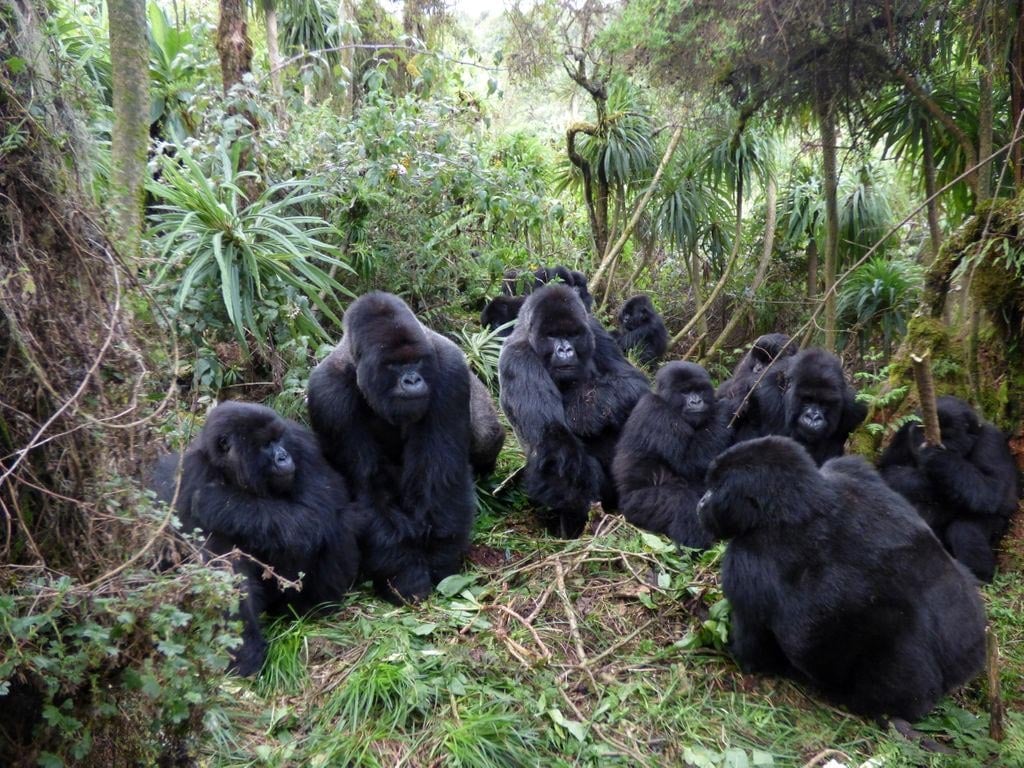The Perilous Mountain Gorilla Predators & How They Survive Them
Mountain Gorilla Predators; Are you curious about how mountain gorillas survive in a predator-filled world and the strategies they use to protect themselves and their young from the threats of the wild?

Mountain gorillas are one of the most iconic and endangered species on the planet, residing primarily in the mountainous forests of the Virunga Mountains in Central Africa.
While these majestic creatures are primarily herbivorous and known for their gentle social structures, they exist in a complex ecosystem where various potential predators also roam. Understanding the dynamics between mountain gorillas and their predators provides insight into their behavior, survival strategies, and the delicate balance of their habitat.
Potential Natural Mountain Gorilla Predators
Humans; Although not bloody predators in the natural sense, Humans by far are the biggest threat to mountain gorillas in their natural habitats.
They pose a variety of dangers to these gentle giants among which include poaching and habitat destruction. Their day-to-day different activities such as logging, mining, farming, and settlement, directly impact the gorilla populations.
Leopards: As one of the few natural predators of mountain gorillas, this elusive animal primarily targets baby gorillas or vulnerable individuals. Adult gorillas are too large and powerful to be preyed upon by these big cats.

Crocodiles; Although very rare, crocodiles pose a potential threat to gorillas that venture near water sources for refreshment. These reptiles typically target infants or juveniles who have not yet developed the tactics needed to avoid capture or sense their presence.
Crocodiles patiently wait submerged in the water, and when a young gorilla comes close, they strike swiftly.
Matured mountain gorillas generally face a few threats from natural predators because of their large size and exceptional strength.
However, predators like leopards, lions, and hyenas may occasionally attempt to prey on weak or injured mountain gorillas for example who have fallen victim to snares set by poachers to catch them or other wild animals such as bush backs.
Mountain Gorilla Protective Behaviors from Predators
Mountain gorillas have developed various strategies to protect themselves and their young ones from the deadly hunters of the wild. These strategies include;
Close Monitoring majorly of the infants. This is especially done by the specific mothers who keep a vigilant eye on their infants. They are seen keeping them within proximity, carrying them on their backs, and ensuring that they are safe.
Gorillas live in social groups led by a dominant silverback, a silverback gorilla also plays a crucial part in the protection of baby gorillas and adults within his group. He usually positions himself between the potential threats and his group.

In case of any potential threat, he is seen displaying aggressive behaviors such as chest beating and the use of different vocalizations to deter predators. Additionally, he fosters group cohesion, encouraging mothers and other adults to remain alert and supportive.
His protective instincts and formidable presence are vital for the survival and well-being of the vulnerable young gorillas and other members of the group.
In case of a threat, gorillas communicate using various vocalizations that can alert other group members about the potential threat present, enabling them to take necessary precautions.
Behavioral Responses of Mountain Gorillas to Predators
When mountain gorillas sense a predator, their behavior shifts significantly. They become highly alert, with increased vigilance and monitoring of their surroundings. They gather together, ensuring that the young ones are protected in the center of the group.

Adult males, particularly silverbacks may charge, display aggressive behaviors such as chest-beating and vocalizations to scare off potential predators.
If the predator persists, the silverback challenges it into a deadly fight using all its considerable strength in the name of protecting his family.
How do Mountain Gorillas Survive in a Predator-Filled World?
Mountain gorillas have adapted to survive in an environment shared with potential predators through social structures, communication, and protective behaviors. Their thick, muscular bodies and social cohesion make them formidable opponents for any predator.
Frequency of Predator Encounters
Encounters with natural predators are relatively infrequent for mountain gorillas, particularly for mature individuals. Most threats stem from human activities rather than wildlife. Continuous monitoring and conservation efforts are vital to minimizing human-induced dangers and protecting these incredible animals from the few natural predators they face.
The Role of Predators in the Ecosystem
While predators pose threats to mountain gorillas, they also play a crucial role in maintaining ecological balance. By controlling herbivore populations and contributing to biodiversity, predators help sustain the health of the ecosystem.
However, the most significant threat to mountain gorillas remains human activity, underscoring the need for continued conservation efforts.
Mountain gorillas are remarkable survivors in a world where they share space with potential predators. Their social structures, protective behaviors, and adaptation strategies have enabled them to thrive despite the challenges posed by both natural and human threats.
Understanding these dynamics not only enriches our knowledge of mountain gorillas but also emphasizes the importance of conserving their habitats and ensuring their continued survival.
What are Gorilla’s Prey?
Gorillas are primarily herbivores, primarily feeding on a variety of plant materials, including leaves, stems, fruits, and flowers. They occasionally consume insects, such as ants and termites, but they do not have natural predators or engage in hunting.
The primary threats to gorillas come from habitat loss, poaching, and disease rather than from other animals. Their diet and social structure play a crucial role in maintaining their ecosystems, as they help disperse seeds and promote forest growth through their feeding habits.
You may also wish to know;
What is a gorilla’s worst enemy?
A gorilla’s worst enemy is not a wild predator but humans. While leopards may occasionally prey on young gorillas, the greatest threats come from habitat destruction, poaching, and disease transmission from human contact. Deforestation for agriculture and development fragments their homes, while illegal hunting targets gorillas for bushmeat or the pet trade.
Additionally, diseases like Ebola and respiratory infections, often introduced by humans, can wipe out entire populations. Though gorillas are powerful animals, their survival is deeply vulnerable to human actions, making humankind their most dangerous and persistent enemy in the fight for conservation and survival.
Frequently asked questions (FAQs) about Mountain Gorilla predators:
1. What are the main predators of Mountain Gorillas?
Mountain gorillas have very few natural predators. The main threats come from large carnivores like leopards, but they are extremely rare in the gorillas’ habitats. Humans, through poaching, habitat destruction, and disease transmission, are a far greater threat.
2. Do leopards hunt Mountain Gorillas?
Leopards are one of the few animals capable of preying on mountain gorillas, but attacks are extremely rare. Gorillas are large and strong, making them difficult prey for leopards. Most gorilla groups can defend themselves effectively.
3. How do Mountain Gorillas protect themselves from predators?
Mountain gorillas rely on their size, strength, and social structure for protection. The dominant silverback male in the group is particularly protective of the younger gorillas and females. The group stays close together and can fight off smaller predators if necessary.
4. Are humans a major threat to Mountain Gorillas?
Yes, humans are the biggest threat to mountain gorillas. Habitat destruction, poaching, and diseases transmitted by humans (such as respiratory infections) pose significant risks to their survival.
5. What role does the silverback play in defending the group?
The silverback is the leader and protector of the group. He is responsible for keeping the group safe from any predators, including leopards, and will use his strength to fend off threats. His presence ensures the group’s safety.
6. Do other animals in the habitat pose a danger to gorillas?
Besides leopards, no other animals in the mountain gorillas’ habitat are significant predators. However, smaller animals like jackals or hyenas may scavenge gorilla carcasses if one dies, but they rarely pose an immediate threat to living gorillas.
7. Has the gorilla population been affected by predators in the wild?
Predators rarely have a significant impact on gorilla populations. Human activities, such as habitat loss and poaching, have had a much greater effect on the species. Conservation efforts are now focused on protecting gorillas from these human-related threats.
8. How do conservation efforts protect Mountain Gorillas from predators?
Conservation efforts primarily focus on habitat protection, anti-poaching laws, and community education to reduce human-wildlife conflict. Rangers monitor gorilla groups to prevent poaching and protect the gorillas from any potential threats, including rare predator encounters.
You may also wish to know;
